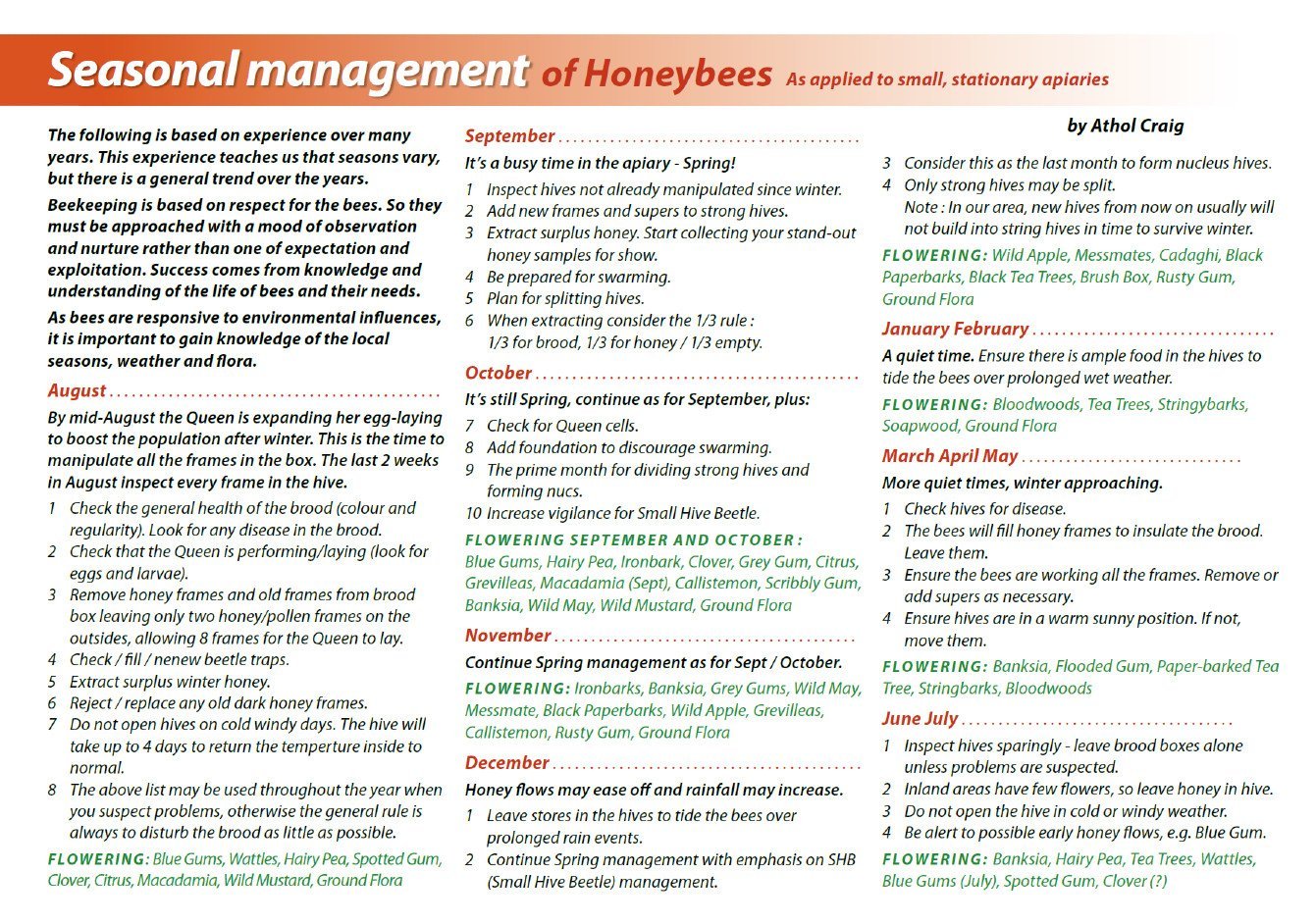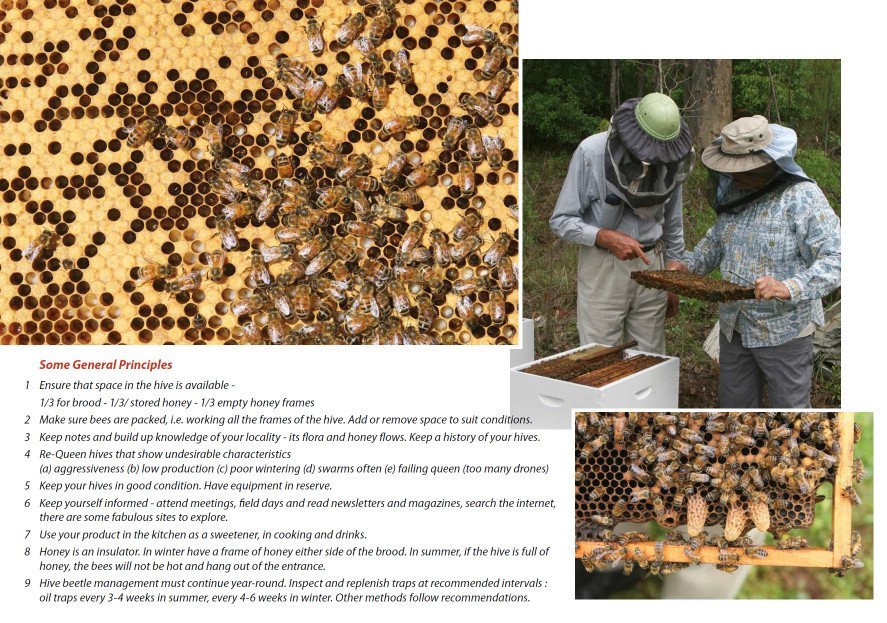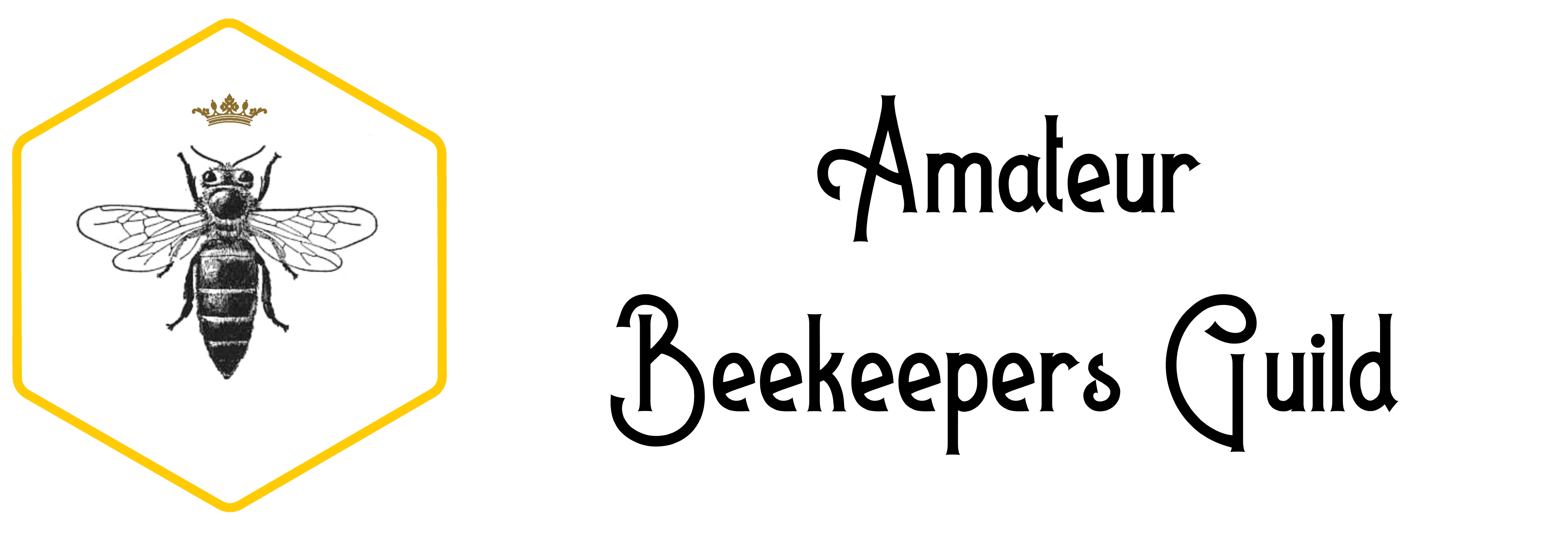Spring
Spring is the start of the beekeeping season. Getting off to a good start will set you up for the rest of the season.
September
This is a critical time for your bees. As the days are becoming longer the queen will starting to lay more eggs and the colony will use more of its supplies of food for the brood. It is often at this time of year that they can die from starvation – due to inadequate stores of honey from the autumn.
If the weather is good and the bees are flying, you can have a quick look inside the hive. You should not disturb the bees much. If you find the stores are very low – then you need to emergency feed. You can also gain any insight in the state of colony by watching the entrance of the hive. Bees should be coming and going with pollen for the brood.
October
Flowers and nectar should start appearing. The brood will expand and it is a good time to find and mark the queen. If you wait till later in the year, it is sometimes hard to find her. You should also do a spring clean of the hive, replacing any frames which are not in good condition and removing any brace or burr comb.
November
The brood will be expanding at a faster rate and hopefully the weather will be good. You will need to start inspecting the colony regularly and watching for signs of swarming. You may also need to add a super and a queen excluder.
Summer
This is the main season of beekeeping with the colony in full swing and lots of activity.
December
The hive will be in full swing. If you have avoided a swarm then there will be a lot of bees. If you have honey then you might need to add extra supers and extract the honey. Be careful to leave enough stores for your brood. Some parts of the country have a lack of nectar in December and you should also keep checking that they have stores and feed if necessary. If you are planning to requeen then this is the time
January
The number of bees will be dropping – however the nectar and pollen will be in full flow. You should add supers as necessary and regularly inspect your hive for signs of swarming.
February
The bee and nectar flow will be starting to drop rapidly.
Autumn
Your bees will start preparing to go into winter and you should make sure that they have sufficient stores.
March
The worker bees will throw the drone bees out of the hive. The queen will stop laying eggs and the population will be greatly reduced. You should remove some honey if the bees have surplus. You should also start winter feeding if the honey stores are short.
April
The bees will be preparing for winter and will not spend much time outside the hive. You should keep winter feeding to ensure the bees have enough food. If you are storing equipment and frames – you should protect them against attack from pest such as wax moths. You can also start making things from your produce such as candles or polish.
May
The bees will go into a cluster and will rarely leave the hive.
Winter
Winter is the quietest season for beekeepers. You will not inspect the hive other than to check that it is still secure. If you want to check that your bees are still there – you can listen to the bee hive.
June
The bees will be in a rugby ball size cluster in the hive living off their stores. A bee will occasionally go outside to defecate to keep the hive clean. You should not disturb them.
July
The bees will still be in their cluster, keeping as warm as possible.
August
The bees will be in a cluster however the queen will start to lay a few eggs. You should not disturb your bees – but start to get your equipment ready for the start of the season in September.

Beekeeping throughout the year
The following monthly guidelines cover seasonal changes, flora blooming patterns, what to expect in and around your hive and what beekeeping activities are likely to be needed, with a focus on the south west of Western Australia.


